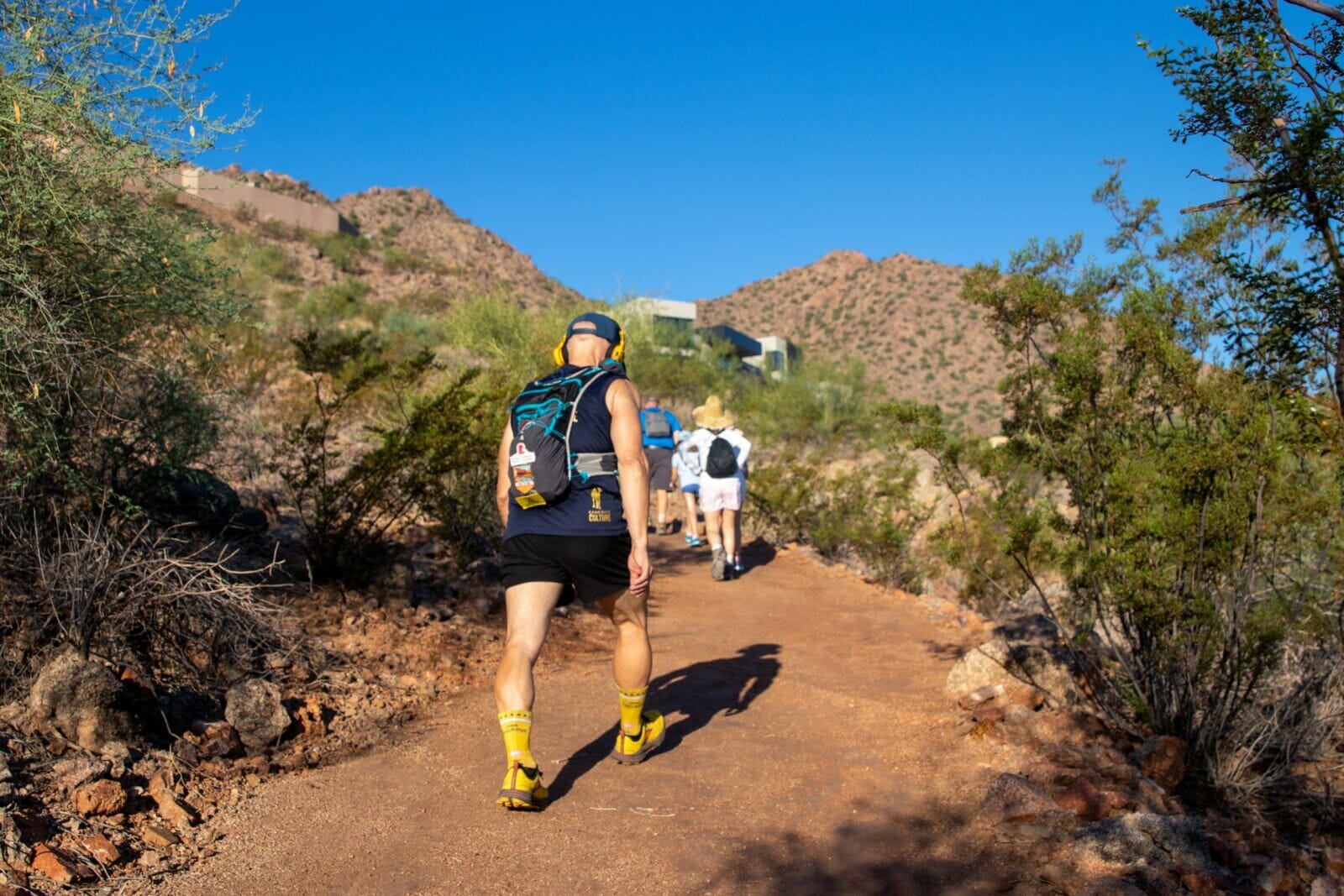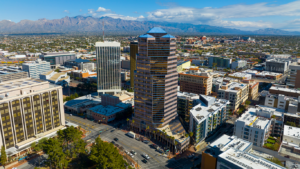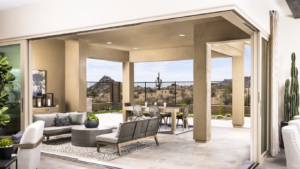Braden Cearley enjoys the strenuous hike up Camelback Mountain, where the reward at the top is a 360-degree view of the nation’s fifth largest city and its suburbs sprawled out below.
“When you start on the bottom, it’s a lot of scenic rocks and stereotypical desert stuff,” Cearley said. “But once you get about three quarters of the way, the trail starts going high enough up on the ridge where you can then see over the city of Phoenix.”
READ ALSO: Ranking Arizona: Top 10 best places to live for 2022
READ ALSO: 10 of Arizona’s best hikes
The 20-year-old from St. Louis is one of many Valley visitors and residents who welcomed the Sept. 30 reopening of the Cholla Trail on Camelback’s eastern ridge, which shut down in 2020 after a 300-pound boulder crushed a hiker’s legs. The trailhead has been moved away from homes, restrooms and drinking fountains have been added, and the trail has been made safer.
During the closure, the Phoenix Parks and Recreation Department made major improvements to the trail, including relocating the trailhead from Cholla Lane to Invergordon Road in Paradise Valley, which becomes 64th Street in Phoenix.
Camelback Mountain rises where Phoenix touches Scottsdale and Paradise Valley. Its summit sits at 2,704 feet above sea level and is Phoenix’s highest peak. The Cholla Trail improvements recognize the community’s regard for this Valley landmark, which has a rich history of working to preserve and to protect it from development – including a 1950s plan to put a restaurant at the top.
Adam Waltz with Phoenix Parks and Recreation said the improvements to Cholla Trail help to create the safest atmosphere possible for hikers.
“You have a lot of people hiking, they may have headphones in walking down from the trail and now you have cars in the mix. We just want to make sure that everybody is safe,” he said.
The city has also removed unstable boulders around the trail and installed trail posts and signs to guide hikers.

A mountain worth fighting for
Before Camelback Mountain became a popular hiking destination, the Hohokam people considered the mountain a sacred place. A cave on the mountain’s north side is believed to have been used by the Hohokam as a religious and ceremonial place. Echo Canyon Trail leads hikers past the religious site today.
“It is quite a powerful, beautiful place to go and get this amazing 360 perspective,” said Marshall Shore, who is known as Arizona’s Hip Historian.
During the 1950s and ’60s, private investors bought up land around the mountain to construct houses, and there was talk about building a swimming pool and restaurant at the summit. In that time period, Phoenix’s population had grown from 100,000 to 400,000, and interest in living on Camelback was high.
Hikers and residents who loved its beauty voiced their concerns to the city. They worried that as more private homes went up, public access would be restricted.
The mountain, though, was outside city limits.
“If Barry Goldwater had not stepped in decades ago, it would be covered in homes, each one trying to top the next home,” Shore said.
The longtime senator and Republican icon made it his mission to protect Camelback Mountain. In 1965, Goldwater chaired the Preservation of Camelback Mountain Foundation, which raised money to keep development off of the mountain.
“He was really trying to help save those iconic features in the Valley,” Shore said.
Goldwater didn’t interfere with the private properties that were already built, but he did want to save the remaining open areas, specifically the summit.
The foundation’s goal was to raise $300,000 (about $2.8 million today) to buy land on the mountain to ensure public access. Goldwater treated this like an election campaign by getting the community and his closest allies to donate anywhere from 25 cents to $25,000. Nearby schools held canned food drives which added more money to the donation pile.
At one point, Goldwater even wore a Beatles wig to a high school dance and played “Silent Night” on the trombone. His brother had bet Goldwater $1,000 that he wouldn’t pull it off, but he did and his brother paid.
“He (Goldwater) was able to bring a lot of his folks in to help preserve what they knew and loved about Camelback,” Shore said. “If it hadn’t been him, someone else I would like to think, would come along, but I don’t know if they would have had his gravitas to be able to do as much as he was able to do.”
Despite their efforts, the community’s donations fell short in the mid 1960s, but Goldwater kept pushing.
Finally, in 1969, Goldwater and the community’s efforts were answered by a federal grant. The grant, combined with the foundation’s donations, was enough to buy the higher elevations of the mountain.
A year later, Phoenix built Echo Park and started building a hiking trail to the summit.
“We all know that nothing is forever and things change,” Shore said. “ But hopefully, those limited amounts of public beauty that are so accessible continue to stay that way.”
In December 2018, the Phoenix City Council voted to declare Camelback Mountain a preserve. The declaration was the result of efforts between the Phoenix Mountains Preservation Council, the Parks and Recreation Department and other community members.
“From time to time, there have been people that wanted to have a cable car up Camelback Mountain to a restaurant or something,” said Libby Goff, secretary of the Phoenix Mountains Preservation Council. “If we don’t have Camelback Mountain designated as a preserve, then then we don’t have a lot of ground to stand on in trying to prevent that kind of thing from happening.”
The council, founded in 1970, works to protect the natural beauty of Phoenix’s multiple mountain park areas and their access to the public.
Goff said making sure Phoenix’s landmarks stay untouched is a daily task, but one that’s ultimately rewarding.
“I am a native of Phoenix, and I’ve been hiking since I was a kid,” Goff said. “I realized, I’m enjoying hiking on trails several times a week. I want to make sure that this is around for many years to come.”
Echo Canyon or Cholla Trail?
Camelback Mountain has four trails, but the best known are Echo Canyon and Cholla, which reach the summit.
“You weren’t like a true Phoenician until you did at least Cholla, if not Echo,” Shore said.
Echo Canyon, with its steep roughly 1.42 mile hike to the summit, is considered more challenging than Cholla. Hikers gain about 1,280 feet in elevation as they navigate large boulders most of the way to the top.
“It’s decently taxing if you’re not used to hiking or that kind of cardio,” Cearley said. “If you’re a first timer, it may not be the smartest idea to just jump in.”
Cholla Trail is a 1.42 mile hike and gains about 1,250 feet in elevation. Both Cholla and Echo Canyon take two to three hours to complete.
Cholla might sound like an easier trail because it’s less steep, but it comes with its own set of difficulties.
“You’ve got that east exposure, and particularly in the beginning part of the day,” said Jes Dobbs, owner of apparel brand Camelback Culture. “So I think one of the bigger dangers of Cholla is people thinking that it looks easy, but not preparing with that hydration and getting quickly dehydrated.”
Despite the dangers, both trails offer glimpses of wildlife, including Harris’s antelope squirrels, quail, road runners, hawks, chuckwallas and the occasional rattlesnake. This is what draws Cearley to the mountain.
“My favorite thing is seeing the birds or just the lizards on your way up,” he said. “Seeing the animals that have just naturally adapted to be in such an inconvenient place is pretty cool.”
The mountain and its people
For many, Camelback Mountain is more than just a hike; it’s a community. For Dobbs, the mountain was inspiration.
“In summer of 2017, I was looking at the mountain and this graphic came into my head,” said Dobbs, who used to be an interior designer. “I made the first shirt by hand.” The image featured the mountain’s silhouette and looked similar to the Superman logo.
Dobbs intended the shirt to be a one-off, but others saw the unique design and wanted their own. That’s how Camelback Culture began.
The shirts became something of a uniform for avid Camelback hikers, who started to connect through Dobbs’ apparel. After making hundreds of shirts, Dobbs expanded the community by creating a social media page for hikers.
“I figured it would help create a real community vibe, more universally, so that people would just be able to claim sort of more of a home ownership for it,” Dobbs said. “I really felt that it would help keep it (Camelback Mountain) nicer so that we can kind of all become guardians of it.”
Dobbs said she immediately knew when the hiker’s leg was crushed by the boulder on Cholla Trail and that it was only a matter of time before this popular route would close. The pandemic, she said, also was a factor.
“All the regulars keep joking about it – like the two weeks story,” Dobbs said. “Then it went to the two months story, and then it was six months, and it just kept going.”
Dobbs knew some homeowners near the Cholla trailhead didn’t want the trail to reopen, complaining of trespassing, trash and crime. So she took on the role of activist, pushing the city to be more transparent with the public and talking about how vital the mountain is for the hiking community.
“You do not park yourself on a natural resource that should be open to the public, and then get upset that they want to access it,” Dobbs said. “I harassed the city, and anybody I could on my social media to open it because it belongs to the people, and keeping it closed is not the solution.”
When the trail reopened Sept. 30, Dobbs was there early in the morning handing bottles of cold water to hikers. She said people need to hike responsibly, which will help ensure the trail doesn’t close again.
This means staying hydrated, being aware of the difficulties of the trail, wearing good shoes and respecting the land.
“We want people to be smart and make smart choices. And those smart choices also help protect our first responders” Dobbs said. “If you drink enough water and pre-hydrate, then the rest of us don’t have to trek up the mountain 500 times over.”
Dobbs said people often credit her for building the hiking community at Camelback, but she said she simply “held up the mirror” for community members to find each other, and to cherish the natural wonder of the mountain.
Story by Autriya Maneshni, Cronkite News




